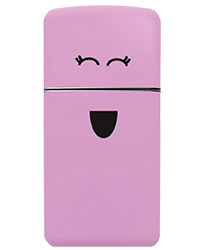There was once a time when microwaves simply heated things up, fridges just kept things cool, ovens only cooked things and all a rubbish bin did was store your rubbish. Those days are fast disappearing. We’re moving towards an age when everything is connected to everything else and they’re all talking about you.
At the very least we’ve arrived at a time when everything has the potential to connect to you and everything around you. The technology enabling this is something that many of us already have in our homes, offices and even our cars and airplanes: WiFi. For the uninformed, WiFi is a simple technology that allows an electronic device to exchange data or connect to the Internet wirelessly using radio waves.
Up until recently, only exceptionally ‘smart’ devices were able to make use of WiFi technology to connect to the Internet and do amazing things.
Smartphones, tablets and connected televisions are just the beginning of a movement being called the Internet of Things (IoT). You may think that controlling your television using your iPad is pretty nifty but wait until your fridge can tell your laptop to log online and order you more milk.
Sites to keep an eye on
- Nest:(recently acquired by Google for $3,2bn) nest.com
- MobiPlug: mobiplug.com
- SmartThings, making dumb things smart: smartthings.com
The Technology
The IoT is more a movement pulling together a collection of technologies than a single identifiable technology that one needs to get to grips with in order to form part of the movement.
Massive global manufacturers of technology have begun to thread their products and technologies together. Samsung is one of the prime examples of a company weaving their products together and making them smarter. The company has recently demonstrated a smart fridge, intelligent vacuum cleaner, washing machine and air conditioner.
Each of these devices on their own can potentially become disruptive technologies that change entire industries if used correctly. Weaved together, you get the Internet of Things talking to other things and gathering staggering amounts of data.
The Application
Simply put, applying the IoT is going to be thrust upon you and your businesses and lives before too long. It’s best to start preparing for the onslaught of connected devices as soon as you can.
If you run a restaurant and are tired of wasting food, your smart fridge will be able to track how many mushrooms you use in a week and ensure that you don’t order more than you need. If you are a medical practitioner of any kind, your stethoscope may soon be able to wirelessly transmit data you gather on your patient in real time to your iPad allowing you to analyse the information.
What You Can Do
It’s important to understand how connected devices can affect you, your life and your business. Connected devices, if your business is in order, can simplify processes and keep track of things that you may usually do by hand or without automation. The easiest example of this is your family shopping list or company stationery requirements. When you’re running out of something, it will be taken care of.
The more complicated thinking around the IoT involves capitalising on the movement while it is still young and breaking ground. Whatever you do for a living it’s time to start thinking about what you would ask your most basic device if you could get an actual answer out of it.
For example, what could your store room tell you if it could talk? What would your fleet of cars say if they had a voice, or what data would you find relevant if you could extract the information from the coffee machine or watercooler to optimise the work environment for your staff? These are oversimplified examples but they help to explain the basic premise of the Internet of real things in your environment.
A major requirement of the IoT movement will be making sense of the masses of data that will exist. This won’t exclusively be handled by the manufacturers of the devices or products. If you’re into data then maybe you should start considering what your microwave and oven can tell each other about the way you cook and how you can start to build a business around that information.









